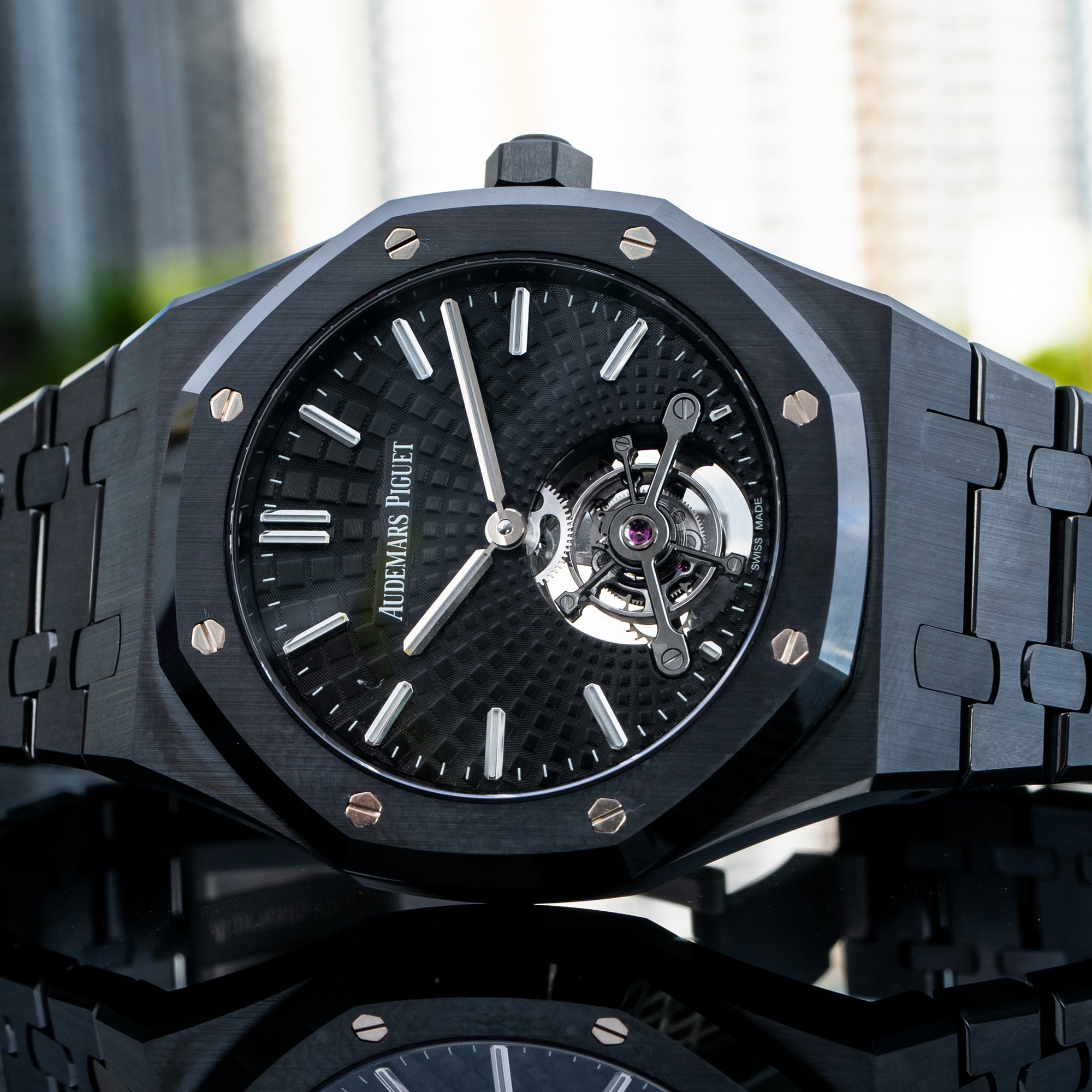Known for making some of the best luxury watches in the world, Rolex is popular for its precision, elegance, and prestige. The Swiss brand has an unshakable reputation for excellence in watch-making.
Yet, a common question often arises when discussing Rolex watches: "Do Rolex Watches Have Batteries?" To answer this, we need to look at the nuts and bolts of Rolex timepieces, which are almost all mechanical movements.
In this article, you will find out how Rolex watches work, why most models don't need batteries, and why the Rolex Oysterquartz is a notable exception; it runs on a battery-powered quartz movement. Quartz Rolex watches were an exception produced in the 1970s and 1980s of the quartz crisis, when many Swiss watchmakers, including Rolex, tested the technology.
We'll also examine the pros of mechanical movements, Rolex's commitment to craftsmanship, and how to keep Rolex watches running without a battery.
Overview of Rolex Watches as a Symbol of Excellence in the Luxury Brand Industry
The luxury watch industry is full of recognizable names, including Rolex. Rolex watches are famous for their rich history, exquisite craftsmanship, and designs, but they're more than just timepieces; they represent status, success, and accuracy.
No matter the model, Rolex Submariner or Rolex Datejust, Rolex has always been associated with quality and innovation.
Founded in 1905 by Hans Wilsdorf and Alfred Davis, Rolex has changed the face of watchmaking by introducing reliable, stylish, and sophisticated models. Throughout the years, Rolex has maintained the finest craftsmanship and continues to lead the manufacturing of the most renowned mechanical watches worldwide.
Rolex's dedication to fine watchmaking techniques is demonstrated in its creation of high-quality, self-winding mechanical watches. The company's vision is to combine innovation with timeless design, and its commitment to this vision directly reflects this vision. Rolex pays close attention to its watches' mechanical movements and accurate craftsmanship, which ensures long-term durability.
How Rolex Watches Work: Understanding the Basics
While discussing the Rolex watches, the most frequent question is whether these timepieces run on batteries. The shoranswerit is that most Rolex watches don't run off batteries. Instead, they are usually powered by natural wrist movement through mechanical movements. The energy is stored and then slowly unwinds in a main spring that drives the watch hands in a mechanical watch.
Mechanical Movements vs. Quartz Technology
It's important to distinguish between mechanical and quartz watches to understand why most Rolex watches don't use batteries.
-
Mechanical Watches: In mechanical movements, energy is stored in a mainspring. Over time, the mainspring unwinds, powering the hands of the watch and guaranteeing an accurate time. Mechanical watches are either manual or automatic. The manual ones require regular winding via the crown. Like most Rolex models, Automatic Watches use the wearer's wrist movement to wind the mainspring automatically.
-
Quartz Watches: on the other hand, Quartz watches are powered by a small battery. These Rolex watches have batteries, and the movement is powered by a quartz crystal vibrating at a specific frequency. The battery sends an electrical current through the quartz crystal. Quartz technology is often cheaper and more precise, although less sophisticated and engineering-intensive.
Most Rolex watches utilize automatic mechanical movements; they do not need batteries. In most of its models, Rolex has continued faithful to its tradition of mechanical watchmaking, as it has a long history of this art.
Rolex's Commitment to Craftsmanship
The meticulous design of Rolex's mechanical movements indicates a deep-seated commitment to craftsmanship. All Rolex movements are manufactured in-house and tested by hand to ensure accuracy and durability.
The perpetual rotor is one of the most critical components of Rolex's automatic movements, a semi-circular weight that moves with the wearer's wrist and winds the mainspring. This is an energy-efficient system, so if you wear the watch regularly, it will always be powered.
The winding crown has also been studied in detail and can be manually wound. With the perpetual rotor and this mechanical marvel, your Rolex will never need a battery.
Do Rolex Watches Have Batteries?
The Truth About Batteries in Rolex Watches
As we said before, most Rolex watches do not need batteries. These watches are powered by natural wrist movement, meaning the timepiece does not require a conventional battery. Rolex watches also have automatic movement, meaning they have a self-winding mechanism, and you don't have to replace the battery.
However, there is one exception: the Rolex Oysterquartz. This limited-edition model, produced between 1977 and 2001, uses quartz technology powered by a battery. During the quartz crisis of the 1970s, when quartz-powered watches flooded the market and took the lead for affordability and accuracy, Rolex produced the Oysterquartz models. Rolex's use of quartz in the Oysterquartz was short-lived, and the brand quickly returned to its mechanical roots.
The Notable Exception: Rolex Oysterquartz
In Rolex's history, the Rolex Oyster Quartz and Rolex Oyster Quartz Datejust stand out because they were quartz-powered, not mechanical movements. These models were introduced in the 1970s as part of Rolex's experimentation with the exploding popularity of quartz watches during the 'Quartz Crisis' or the 'Quartz Revolution' as it was known when Swiss watchmakers found themselves going up against the likes of Seiko and Citizen out of Japan.
As a high-end manufacturer of mechanical watches, Rolex also decided to move into this space to keep up with the competition and the market's need for more accurate, less maintenance-required products.
The Oysterquartz line was powered by Rolex's original quartz movement, which was battery-operated. It was the only Rolex model that used a quartz crystal for maximum accuracy. Of all Rolex offerings, the Oysterquartz is unique because it was the only model to use quartz technology, yet another reason to make this an essential piece of Rolex's history.
In 1977, the Oysterquartz Datejust was the first date-displaying watch to incorporate the brand's timeless aesthetic with the new quartz movement (still robust in an Oyster case, with waterproofing features that continue to the present).
Rolex manufactured the Oyster Quartz to capitalize on the quartz watch trend. Still, it was also a strategic move to keep Rolex in the luxury timepiece market as precision and reliability became increasingly important to consumers.
In the early 2000s, Rolex ceased production of the Oysterquartz models when the company rebranded to mechanical watches, which had grown in popularity. However, the Oysterquartz and Datejust versions are collectible because they are rare and essential in Rolex history. While they may see they are not traditional for Rolex, they are famous for their craftsmanship and precision.
Why Rolex Relies on Mechanical Movements
Advantages of Rolex Automatic Watches
Rolex's decision to focus on automatic movements instead of quartz technology is rooted in several key advantages:
-
Accuracy: Rolex watches are known for keeping accurate time, but their automatic movements are exact. An automatic Rolex gradually unwinds the mainspring and is exceptionally precise over time.
-
Durability: Rolex automatic movements are designed to last. These timepieces are built to last, with many models lasting generations, thanks to the brand's meticulous attention to detail in their construction.
-
Sustainability: Mechanical Rolex watches typically don't need the kind of upkeep that quartz watches, which require battery replacements, do. If you wear or wind the watch manually, it will keep working—no battery is needed.
Rolex as a Luxury Brand
Luxury and mechanical movements go hand in hand with Rolex. A mechanical watch requires more work than a quartz-powered one, which is why they are desirable.
Rolex's reputation for precision and the brand focuses on mechanical timepieces at the top of the luxury market.
Another way Rolex distinguishes itself from other watchmakers utilizing quartz technology is its commitment to mechanical movements. By sticking with mechanical movements, Rolex adheres to its traditional watchmaking methods, which serve many collectors and watch haters.
How to Maintain a Rolex Watch Without Batteries
Proper Use of a Self-Winding Mechanism
This is one of the significant reasons to use an essential Rolex Submariner, or any other model, to ensure it stays powered without a battery. The perpetual rotor inside the watch winds the mainspring while you move, keeping the watch running. If you don't wear your favorite Rolex purchase daily, you can hand-wind it using the crown to keep the watch powered.
When to Service Your Rolex
Although Rolex watches are battery-free, they still need to be maintained. While Rolex suggests servicing a watch after 10 years, that can be a moving target depending on the model and how often you wear it. Regular servicing ensures that your watch will continue to perform as well as possible and maintain its exceptional accuracy.
If your only Rolex model loses time or needs to be wound manually more than usual, it may be time for a service. The movement will be cleaned, lubricated, and timed to return to its original precision and keep it running at peak condition.
Rolex's Approach to Timekeeping: A Blend of Innovation and Tradition
From Pocket Watches to Luxury Timepieces
Rolex's innovation has led the brand from pocket to modern automatic wristwatches. However, this has not diminished the company's roots in mechanical watchmaking or its focus on precision and craftsmanship. The only model that differs from the quartz movement is the Oysterquartz.
The Future of Rolex Watches
In all likelihood, Rolex plans to stay true to mechanical movements in the future with new Rolex watches. Future famous Rolex automatic watches will embody Rolex's heritage of innovation and luxury. They will continue to be powered by the automatic watch movements and magical accuracy that the brand promised.
6. FAQs About Rolex Watches and Batteries
Do any Rolex watches have batteries?
Yes, the Rolex Oyster Quartz is the only model that uses a battery.
What is the Rolex Oysterquartz, and how does it work?
Introduced in the 1970s, the Rolex Oysterquartz is a quartz-powered watch. It is one of the few instances Rolex entered the battery-powered watch game. The Oyster case houses the brand's durable, waterproof quartz crystal, which regulates precise timekeeping.
How do Rolex automatic watches store energy?
Rolex automatic watches store energy through a perpetual rotor, which winds the mainspring with the wearer's wrist motion.
How often should I wind my Rolex watch?
If worn regularly, your Rolex will wind itself automatically. However, if left unworn, you should manually wind it to ensure it remains powered.
Conclusion
For those who were asking, "Do Rolex watches have batteries?" We hope the answer is clear now.
Mechanical movements, a tradition at the heart of the brand, power the Rolex watches. The Rolex Oysterquartz was a notable exception, with its battery-powered quartz movement, but most Rolex watches are automatic, powered by motion from the wearer's wrist.
Rolex has made a mission to hone its mechanical craftsmanship, securing the company's place among luxury watchmakers capable of constructing timepieces without batteries.





